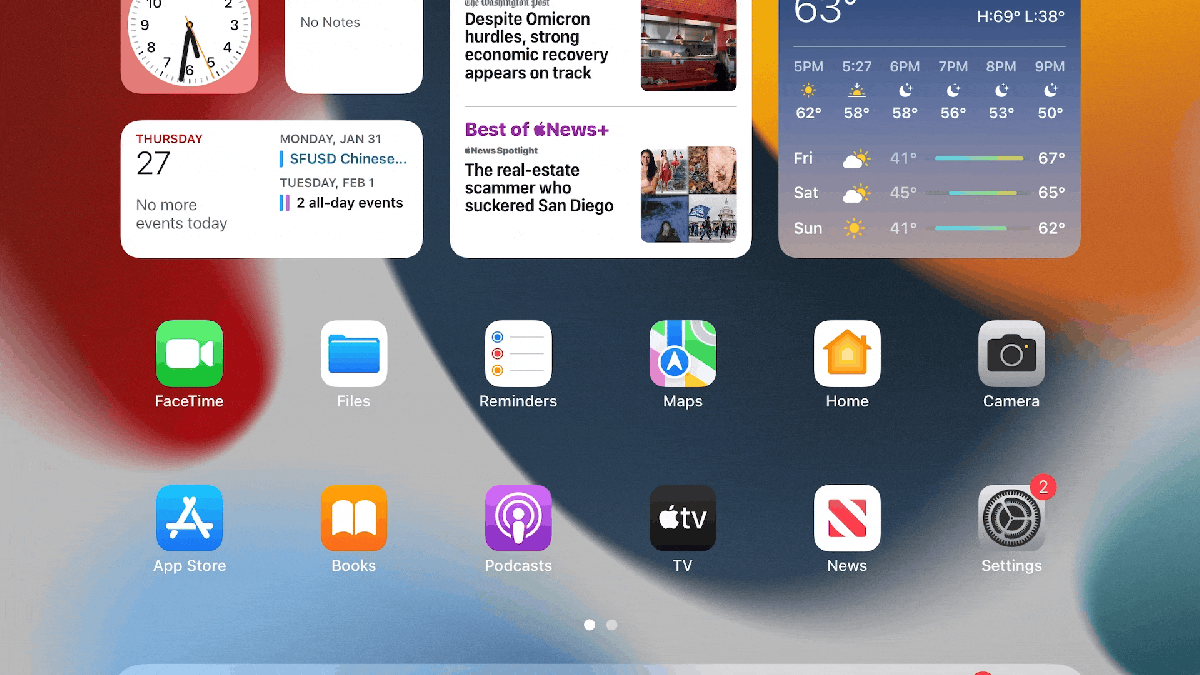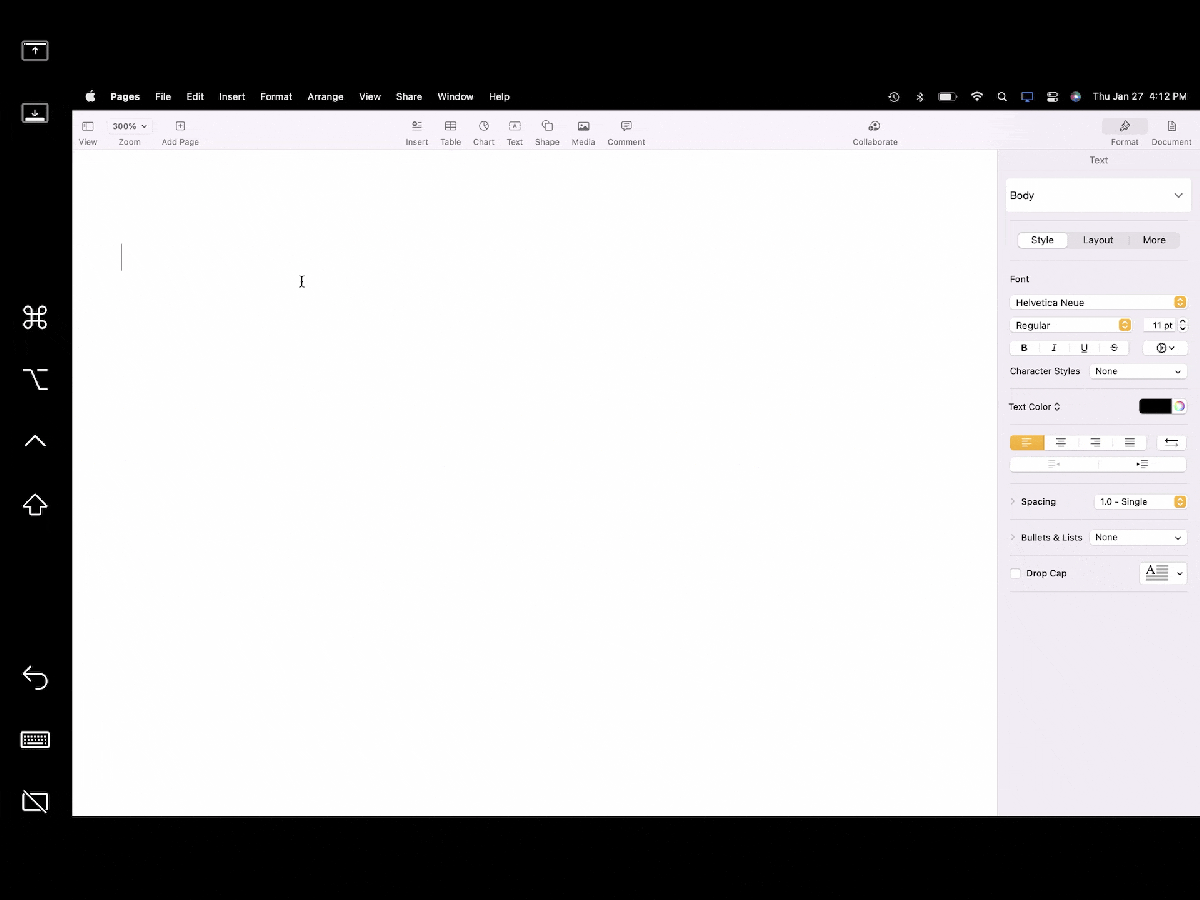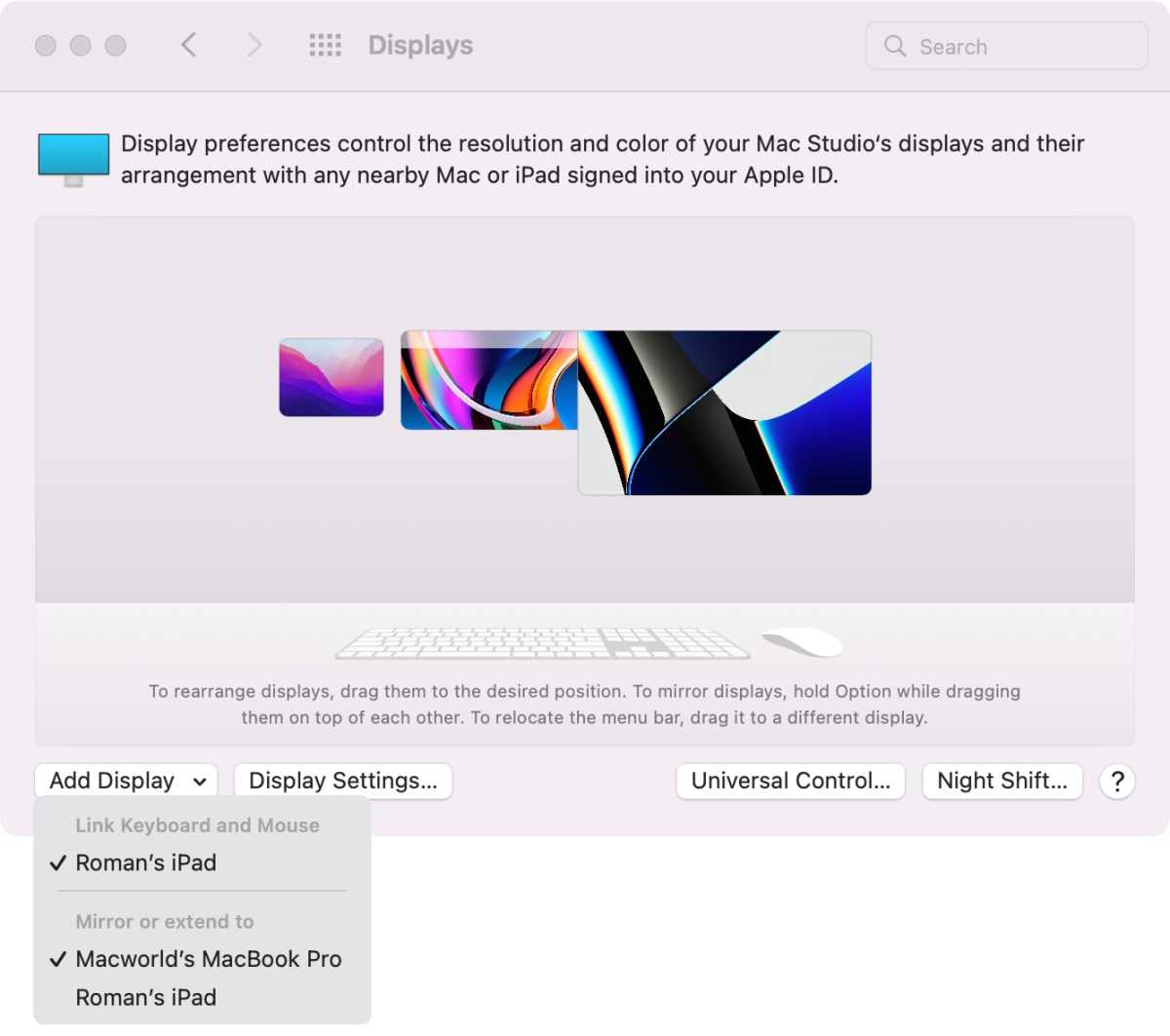macOS 12.3 and iPadOS 15.4 have been released and at long last Apple added Universal Control, the much-anticipated feature that was revealed at WWDC 2021. Late last year, Apple announced that the release of Universal Control would be delayed to this spring, and now it’s finally here.
For the uninitiated, Universal Control allows you to use an iPad as a companion display for a Mac that can be controlled with the same keyboard and mouse. During the demo in the WWDC keynote, Apple VP Craig Federighi merely placed the iPad next to his Mac, and it worked. No cables to connect, no restarting, no need to click anything or say “please.” After some brief setup, it really does work like magic.
Watch Universal Control in action
Connecting the iPad and Mac
Before you can get to the magic, there’s a little bit of setup involved on the Mac. Universal Control is turned on by default on the Mac and the iPad, but you’ll need to head over to the Display pane in System Preferences and select Add Display to select your iPad. You don’t have to do anything else on the iPad, but Bluetooth, Wi-Fi, and Handoff need to all be turned on. There are a few options as well that you’ll find by clicking the Universal Control button.
The whole operation is extremely easy—you don’t really need to pay attention to the iPad at all.
Once it’s all set up, you simply bring the iPad close to the Mac; Apple says they need to be at least 30 feet of each other, essentially Bluetooth range. Then you move your Mac’s cursor past the edge of the display and a bar appears on the iPad’s screen edge to let you know that magic is about to happen. Move the cursor a little more, and voilà! You’re using the iPad via your Mac’s mouse or trackpad.

A sidebar appears when you’re making an initial connection between the Mac and iPad.
IDG
Once you perform the initial interaction between the Mac and iPad, you can move between the two effortlessly—the sidebar that appeared at the initial connection doesn’t even appear anymore. And that’s it, you’re good to go. I didn’t run into any problems whatsoever in the first couple of hours I used Universal Control.
Disconnect, reconnect
You can use your iPad as you usually do without a Mac. Then, when you want to reconnect to the Mac, just tap the Universal Control icon in the iPad’s Dock and your iPad will instantly reconnect to your Mac, no muss, no fuss.
During my testing, I was able to easily reconnect if I moved the iPad beyond 30 feet of the MacBook Pro, or if I put the iPad to sleep by pressing the power button quickly. However, when I turned off the iPad and turned it back on, I couldn’t connect by simply placing the iPad next to the MacBook Pro. I had to go into the Display preference pane and add the iPad as a display. It was there where I found the setting I had missed and need to turn on: “Automatically reconnect to any nearby Mac or iPad.”
Controlling the iPad using Mac input devices
When you’re using the iPad via Universal Control, a dot represents the cursor you are controlling with the Mac’s trackpad. The shade of the dot changes color depending on what it is moving over—the dot becomes white if it moves over dark colors or icons, and it becomes darker when it’s over lighter colors. You can use the iPad just as you regularly would with the touch interface. It’s basically the same experience as if you were using a Magic Keyboard with an iPad Pro.

A file being dragged from a Mac has to be dropped into an iPad app.
IDG
I was able to drag a file from the iPad’s Photos app to the Mac Desktop. However, when I dragged an image from the Mac to the iPad’s Home screen, the icon disappeared and I couldn’t find the file anywhere. Here’s why: what you have to do is drag the file from the Mac to an open app on the iPad—so for an image, you must drag it to Photos, Files, or any other app you want.
Universal Control vs. Sidecar
Configuring the iPad as an additional Mac display is also done through the Displays preference. You can choose to either mirror your Mac or expand your desktop. This feature is actually called Sidecar and is separate from Universal Control. As you can see below, they’re quite different.
Apple provides a touch UI bar on the side of the iPad’s screen that you can use if you want to perform touch input. For example, with the iPad set up to mirror the Mac, I launched Pages, and then I was able to type in the document using the touch keyboard provided by the sidebar. It has buttons for Shift, Control, Option, and Command, and buttons to make the menu bar and Dock hide or appear. There’s also a button to disconnect the iPad from the Mac.

When using the iPad as an external Mac display, a UI sidebar appears.
IDG
In all, my initial experience with Universal Control was great. During my testing over a couple of hours, the connection never dropped unexpectedly, there wasn’t any lag, and I didn’t run into any odd behavior. This is a beta, so Apple is still working on it, but so far, so good.
How to use Universal Control and Sidecar at the same time
If you connect two devices at the same time, you can actually control one with Universal Control and use the other as a display via Sidecar. For example, in the setup in the instructions below, we have a desktop Mac as the main computer, a laptop as a secondary display via Sidecar, and an iPad Pro being used through Universal Control. You can also do this with two iPads and a Mac. Here’s how to set it up.
1. Set up Universal Control between your devices.
2. Now that Universal Control is set up, you’ll assign roles to the devices. Open the Displays system preference.
3. Click Add Display. The drop-down menu that appears lists the displays available and their roles. The Link Keyboard and Mouse section are devices that you want to use with Universal Control. Select which device you want.
5. Click Add Display again. In the drop-down menu, look at the “Mirror or extend to” section. This has the devices that you want to use as an additional display. The iPads and Macs listed here will use Sidecar to acts as an additional display to your Mac. Select which device you want.
6. Close the Displays system preference.
 https://b2c-contenthub.com/wp-content/uploads/2022/03/universal-control-sidecar.jpg?resize=300%2C266&quality=50&strip=all 300w, https://b2c-contenthub.com/wp-content/uploads/2022/03/universal-control-sidecar.jpg?resize=768%2C681&quality=50&strip=all 768w, https://b2c-contenthub.com/wp-content/uploads/2022/03/universal-control-sidecar.jpg?resize=1200%2C1063&quality=50&strip=all 1200w" width="1200" height="1063" sizes="(max-width: 1200px) 100vw, 1200px" />
https://b2c-contenthub.com/wp-content/uploads/2022/03/universal-control-sidecar.jpg?resize=300%2C266&quality=50&strip=all 300w, https://b2c-contenthub.com/wp-content/uploads/2022/03/universal-control-sidecar.jpg?resize=768%2C681&quality=50&strip=all 768w, https://b2c-contenthub.com/wp-content/uploads/2022/03/universal-control-sidecar.jpg?resize=1200%2C1063&quality=50&strip=all 1200w" width="1200" height="1063" sizes="(max-width: 1200px) 100vw, 1200px" />Foundry
You should be all set to go. You can return to the Displays system preferences to change the Sidecar and Universal Control assignments or rearrange how the displays are laid out by clicking and dragging their iconic representations at the top of the settings. If you have the iPad set up with Sidecar, you can switch it to Universal Control by going to the Home screen and tapping the Sidecar app in the iPad’s Dock.





